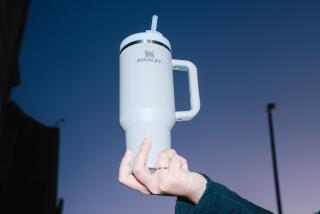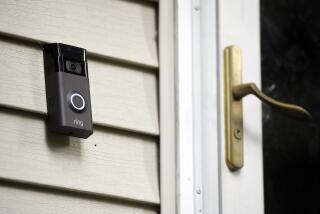U.S. growth improves but is still weak
The economy logged slightly better -- but weak -- growth in the first quarter, spurred by improved sales of U.S. products overseas. Although that’s heartening, the country is still far from being out of the woods.
In fact, a closer look behind the 0.9% increase in gross domestic product during the period revealed much caution on the part of consumers who have been clobbered by the housing, credit and financial debacles.
“What emerges is a picture of an economy that’s gasping for air,” said Bernard Baumohl, managing director of Economic Outlook Group.
Consumers -- who account for about two-thirds of the nation’s economic activity -- boosted their spending at the slowest pace since the last recession in 2001. And their decreased appetite for shopping sprees reduced sales of foreign-made imports here, which helped to narrow the trade deficit.
The revised GDP reading, released Thursday by the Commerce Department, was an improvement from the government’s initial first-quarter estimate as well as the economy’s fourth-quarter performance. Both periods were pegged at a 0.6% growth rate.
But economists still consider the 0.9% growth rate subpar. More normal growth would be a 2.5% to 3% pace, they said. GDP measures the value of all goods and services produced within the United States and is considered the best barometer of the country’s economic health.
Another report showed more people signing up for jobless benefits last week, a fresh sign of softness in the employment market. The Labor Department said new applications for unemployment benefits rose 4,000 to 372,000.
Fallout from the housing crisis continued to be a big drag on overall economic growth; builders in the quarter slashed spending on housing projects by 25.5% on an annualized basis. That was the sharpest decline in 27 years.
Consumers are feeling the pressure. They increased spending at just a 1% pace in the first quarter, the slowest growth rate in that category since the second quarter of 2001. Consumers are pulling back as high energy and food prices leave them with less money to spend on other things. Falling home values are making many homeowners feel less wealthy and less inclined to spend. In addition, the credit crunch has made it harder to finance big-ticket purchases.
When exports and business’ inventories are removed and imports are added in, economic activity actually contracted at a 0.1% pace in the first quarter, the worst showing in more than 16 years.
Businesses also showed some caution, cutting spending on equipment and software. However, investment in commercial construction wasn’t as weak as the government first estimated, contributing to the upward revision to first-quarter GDP.
One of the bright spots keeping the economy going in the first quarter was export growth. Exports, aided by the slumping U.S. dollar, grew at a 2.8% pace, although that was not nearly as much as first estimated and was down from a 6.5% growth rate in the previous quarter.






